
From Name planted trees for you, Recipient Name.
See your Tree Certificate attached, and click here
to learn about One Tree Planted's work.
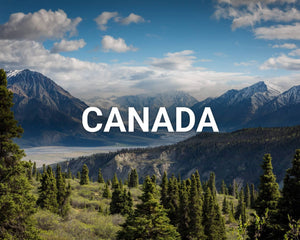
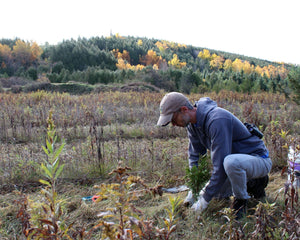
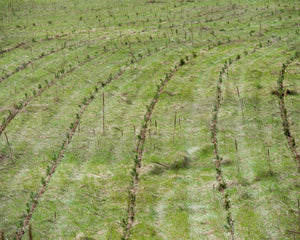
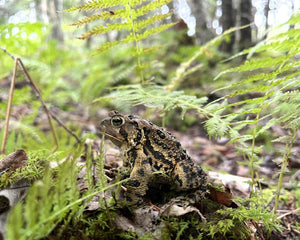
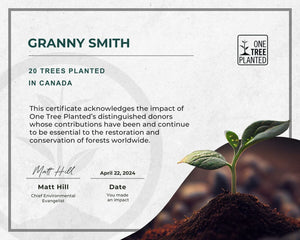
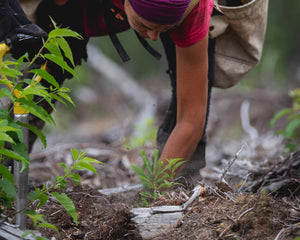
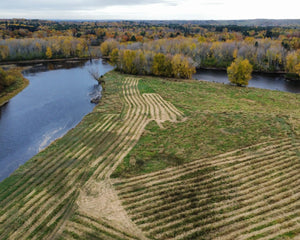
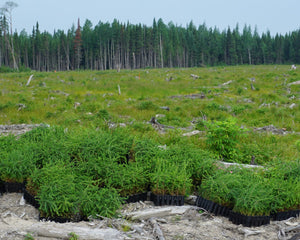
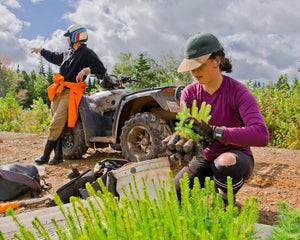
Canada’s iconic landscape consists of boreal forests, the Pacific coastline, and great lakes and rivers. Planting trees in Canada will preserve the country’s beauty and impact the surrounding environment. Learn more
With your help, we will:
Looking to plant trees every month? Join The Grove.
Planting trees in Canada is an important component of restoring forest ecosystems and ecosystem services throughout the country. Reforestation provides numerous ecological benefits, including the enhancement of biodiversity and wildlife habitat and the protection and maintenance of soil and water quality. Ecosystem services that benefit from reforestation include flood and erosion control, improved air quality, and carbon sequestration, all of which are critical to mitigate the effects of climate change. Our Canadian projects include trees planted for wildfire recovery, forest and climate resilience, restoration of degraded lands, watershed protection, and more.
One Tree Planted's projects in Canada are helping to restore forests that provide a multitude of benefits throughout the country. We work with our local planting partners to plan and implement reforestation projects that will provide ecological benefits and direct social and economic benefits to local communities, such as increased recreational opportunities.
A personalized tree certificate (see gallery) to say thanks for your donation. We’ll also send you a report on the Canada project that your donation was allocated to, so you can better understand your trees' impact on the environment and communities.
Every tree we plant will have an impact on the surrounding ecosystem, and must be selected with great care. We work with our planting partners to ensure the species we select will provide the intended benefits for wildlife and communities.
In Canada, we plant a wide variety of native tree species, and species selection is dependent on the desired project impacts. Our reforestation projects in Canada help restore biodiversity, improve soil and water health, and provide wildlife habitat and recreational opportunities.
In total, Canada is home to nearly 200 tree species and is divided into 8 forest regions: Acadian, Boreal, Carolinian (Deciduous), Coast, Columbia, Great Lakes - St. Lawrence, Montane and Subalpine.
The forests in these regions are dominated by specific tree species, such as red spruce, balsam fir, and yellow birch in Acadian forests and red cedar, hemlock, sitka spruce, and Douglas-fir in Coast forests. In addition to these dominant species, a significant number of less common tree species are also found in each of these regions.





We believe in complete transparency regarding how your donation dollars are utilized. We work together with our partners to determine how we can best support them within our reforestation model. Each project has a budget that covers specific primary costs. To learn more about how our funding works, visit the Our Model page.

We work with local planting partners in more than eighty countries, across diverse ecosystems, to fund large-scale, high-impact projects.

One Tree Planted is a 501(c)(3) non-profit environmental charity that makes it easy for individuals, businesses, and foundations to get involved and make an impact around the world.

Every tree planted with One Tree Planted makes a positive impact. Together, we can restore forests, create habitat for biodiversity, and make a positive social impact.
Every One Tree Planted project begins with a detailed proposal from a local planting partner, which details where, why, and how the trees will be planted. After planting wraps up, our Monitoring, Reporting and Verification Team works closely with our reforestation partners to map and monitor their growing trees. This allows us to analyze the impact the trees will have on overall forest health, biodiversity, and surrounding communities.
We take donor impact reporting seriously, and require our reforestation partners to track and report specific metrics for every project that is completed. Click on the button below to view a planting report from a recent reforestation project.

Planting trees in Canada will help to restore forest cover, promote biodiversity, and benefit local communities. Click on the reforestation map to discover a selection of our Canada projects, and the impact they will have for generations to come!

Forests provide jobs to over 1.6 billion people, absorb harmful carbon from the atmosphere, and provide key ingredients for 25% of all medicines. Have you ever taken aspirin? The active ingredient in aspirin comes from the bark of a tree! At One Tree Planted we focus on the 6 Pillars of Reforestation. These pillars are the foundation of why planting trees is such a significant action to take.
Trees help to clean the air we breathe. Through their leaves and bark, they absorb harmful pollutants and release clean oxygen for us to breathe. In urban environments and other ecosystems, trees absorb pollutant gases such as nitrogen oxide, ozone, and carbon monoxide, and sweep up particles such as dust and smoke. Increasing levels of carbon dioxide caused by deforestation and fossil fuel combustion trap heat in the atmosphere.
Trees play a key role in capturing rainwater and reducing the risk of natural disasters such as floods and landslides. Their intricate root systems act as natural filters, removing pollutants and slowing down the water’s absorption into the soil. This process prevents harmful waterslide erosion and reduces the risk of over-saturation and flooding. According to the UN Food and Agriculture Association, a mature evergreen tree can intercept more than 15,000 litres of water every year.
A single tree can be home to hundreds of species of insects, fungi, mosses, mammals, and plants. Depending on the type of food and shelter they need, different forest animals require different types of habitat. Without trees, forest creatures would have nowhere to call home.
From arborists to loggers and researchers, the job opportunities provided by the forestry industry are endless. We don’t just rely on trees for work, though. Sustainable tree farming provides timber to build homes and shelters, and wood to burn for cooking and heating. Food-producing trees provide fruit, nuts, berries, and leaves for consumption by both humans and animals, and pack a powerful nutritional punch.
Did you know that hospital patients with rooms overlooking trees recover faster than those without the same view? It’s impossible to ignore that feeling of elation you get while walking through a calm, quiet forest. Trees help reduce stress and anxiety, and allow us to reconnect with nature. In addition, shade provided by canopy cover helps to protect our skin from the ever-increasing harshness of the sun.
Trees help cool the planet by absorbing and storing harmful greenhouse gases such as carbon dioxide into their trunks, branches, and leaves — and releasing oxygen back into the atmosphere. In cities, trees can reduce ambient temperatures by up to 8° Celsius. With more than 50% of the world’s population living in cities — a number expected to increase to 66% by the year 2050 — urban trees are more important than ever.
One Tree Planted has planted trees in six global regions: North America, Latin America, Africa, Asia, Europe, and The Pacific. Every reforestation project has a unique impact on forests, communities, biodiversity, and the environment. Check out the incredible impact some of our past projects have made!
Read more
This project will reforest areas that were burned during British Columbia’s 2017 Plateau Wildfire. These lands were severely burned and regeneration surveys indicate that natural regeneration is absent or at very low densities.
Reforestation of areas, such as this, that have been severely burned by wildfires expedites the return of healthy forest cover. This project site and the surrounding ecosystem is home to many wildlife species such as black and grizzly bears, wolves, mule deer and moose — as well as many small mammals and birds. Trees provide food sources, shelter from the elements, and protection from predators.
Wildfires have removed thousands of hectares of forest cover near communities like Nazko. Hunting and trapping are important resources for local communities, and they benefit from larger wildlife populations, which in turn rely on healthy forest habitat.
Read more
This project involves planting 2,000 plants per hectare on former agricultural areas in the municipality of Rouyn-Noranda. These areas were cleared for agricultural use, but were never used, leaving them degraded. Reforestation will return tree cover to these deforested areas, with the goal of improving wildlife habitat for a variety of species, such as hare, moose, marten and deer.
Read more
The goal of this project is to improve biodiversity and wildlife habitat and connectivity through reforestation that will connect fragmented natural areas that were previously disturbed by mining activities. In addition to biodiversity and habitat benefits, this project will contribute to improved ecosystem services, such as carbon sequestration and enhancement of soil and water quality.
Involving students, local corporations, and partners in the implementation of this project provides opportunities for learning and local action that will result in social and environmental benefits.